We understand that taking care of a betta fish can be quite confusing. Especially if you’re a new aquarist, you might have a mind full of questions. But even experts could get puzzled by this beautiful creature. Anyhow, if you are looking for a comprehensive Care Guide for Koi Betta Fish, you’re at the right place.
let me ask you: What makes the Koi betta an aquarist’s favorite, other than its looks? I’ll answer that shortly, till then let’s discuss what we’ll cover today.
The Koi betta care involves many aspects and understanding them all is vital. Today, we will discuss the most important ones, like the tank setup, diet, tank mates, and much more. We will also explore potential diseases and their treatment along with Koi Betta breeding. So, come along and dive into the world of Koi Betta fish!
Oh, I almost forgot to answer, the koi betta fish is well-known for its beauty, but it also has a unique personality. These personalities could range from shy to curious explorers, as each Koi Betta has a mind of its own.
Moving on, here’s a quick Care Guide for Koi Betta fish
Quick Care Guide
| Minimum Tank Size | 5 gallons at least |
| Water PH | 6.5 to 8.0 |
| Water Temperature | 75°F – 80°F |
| Care Level | moderate |
| Maximum Size | 3 inches |
| Tank Mates | Yes (similar or smaller-sized peaceful fish) |
| Diet | Omnivores (primarily carnivores) |
For a more detailed insight, you need to understand the Koi Betta fish. Here is an in-depth introduction and comprehensive Care Guide for Koi Betta.
What is a Koi Betta?
Koi Betta fish hail from the Southeast Asian waters of Thailand and Vietnam. However, most of them are bred in captivity. The name “Koi” comes from the Japanese word for carp. This name reflects the ornamental resemblance between the Koi betta and the Koi fish.

This fish is also known as Siamese fighting fish. Its fighting matches are common entertainment in Thailand and Vietnam. Moreover, this fish is popular amongst aquarists for its beauty and personality.
Overall, the Koi Betta fish is a special variant of the Betta fish. This fish is bred in captivity to resemble the Koi fish, its intricate colors, and dragon scales. Its metallic looks and unique colors distinguish it from other bettas.
Koi Betta Appearance
The Koi betta fish has a unique appearance that makes it stand out from other bettas. Although it looks a lot like the Koi fish as if it relates to them.
The Koi betta fish has an elongated body with bright and intriguing colors. The average size of a Koi Betta is about 2.5 to 3 inches. The males are usually larger than the females. Along with that, the Koi Betta boasts long fins that give it an elegant look.
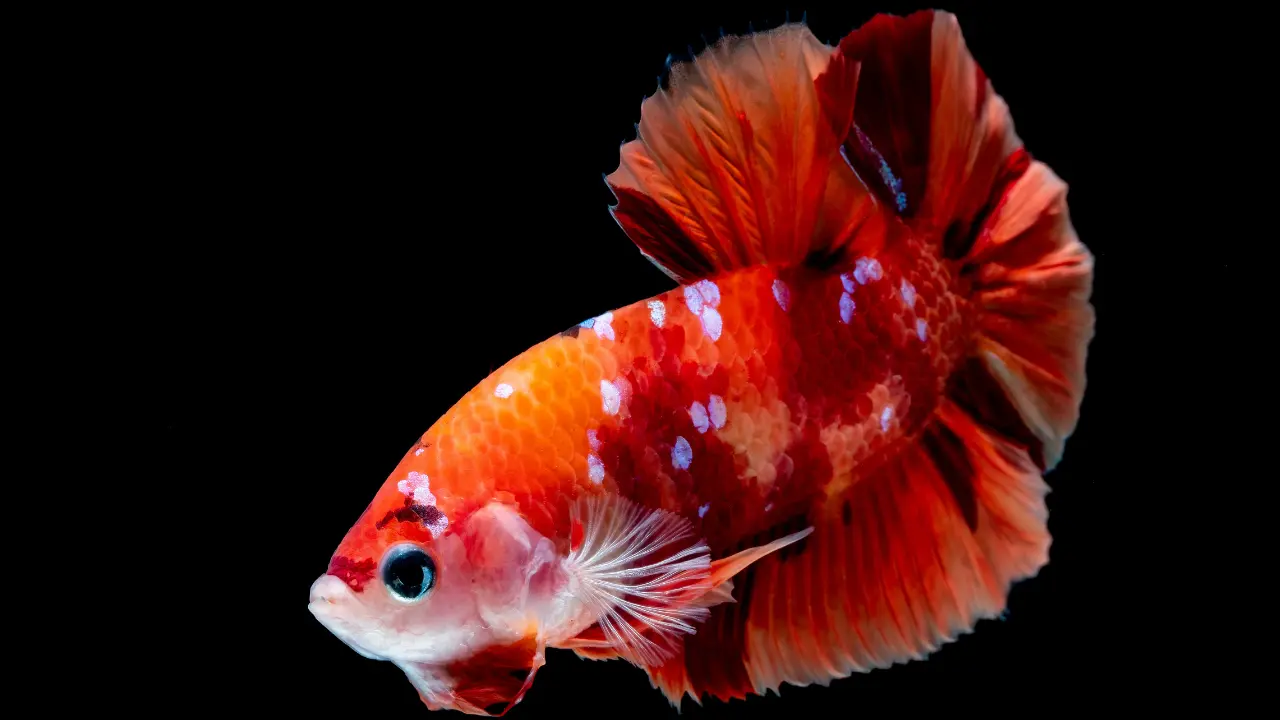
The Koi Betta has a variety of colors, but usually, it’s a combination of red, white, orange, and black. On top of that, it has beautiful patterns and markings like metallic dragon scales. These scales have a swirly and blotchy appearance that adds to the Betta’s mesmerizing looks.
Moreover, the Koi Betta fish changes its colors according to its mood. This color change adds to their looks and helps in understanding how the fish is feeling. , But it’s normal for the hues to fade, darken or even disappear with time. In addition, this fish has a labyrinth organ that allows it to breathe on the water’s surface and in deep waters as well.
Lastly, they also have a variety of tail fins, like the veil tail, the Halfmoon tail, and the Plakat tail. All these variations enhance the beauty of this fish making it an ideal addition to any home aquarium.
Koi Betta Lifespan
Koi Betta’s Lifespan ranges from 2 to 5 years in captivity. While in the wild, almost every betta lives for 1 to 2 years maximum. Predation and competition are the reasons for a shorter lifespan in the wild.
In captivity, its lifespan depends on various factors like genetics, care, and environment. Moreover, a proper and clean environment is also vital for its longevity.

In an ideal environment, bettas even live up to 5 years. However, inadequate care, stress, or illness can shorten its lifespan. Read out our tank setup guides given below to make sure your Koi Betta lives a long and healthy life.
Apart from what we can do, genetics play an important role in determining its lifespan. A clean environment and proper care can guarantee a healthy and thriving fish.
Koi Betta Natural Habitat
Koi Bettas hails from slow or stagnant waters such as ponds, and streams. These environments have warm water and dense vegetation. This setting provides vital shelter and food sources for the Betta’s survival.
Moreover, crustaceans like small insects and larvae are abundant in their natural habitat. These crustaceans are essential food sources for the Koi Betta.

Ideally, Koi Bettas habitat has clean and well-oxygenated water. But just in case the water gets a bit murky, Koi Betta has a secret weapon to stay cool and stylish underwater!
The Koi betta has a labyrinth organ. This allows the Koi Betta to breathe from the water’s surface and thrive, even in imperfect waters.
Overall, the natural habitat of Koi Betta is peaceful and has low competition for food. This allows it to thrive without much effort.
Koi Betta Temperament
Koi Betta Fishes have a diverse range of temperaments, which can vary from fish to fish. Every Koi Betta has a mind of its own, although they are generally peaceful and non-aggressive. However, it may display territorial behavior towards other fish with similar long fins.
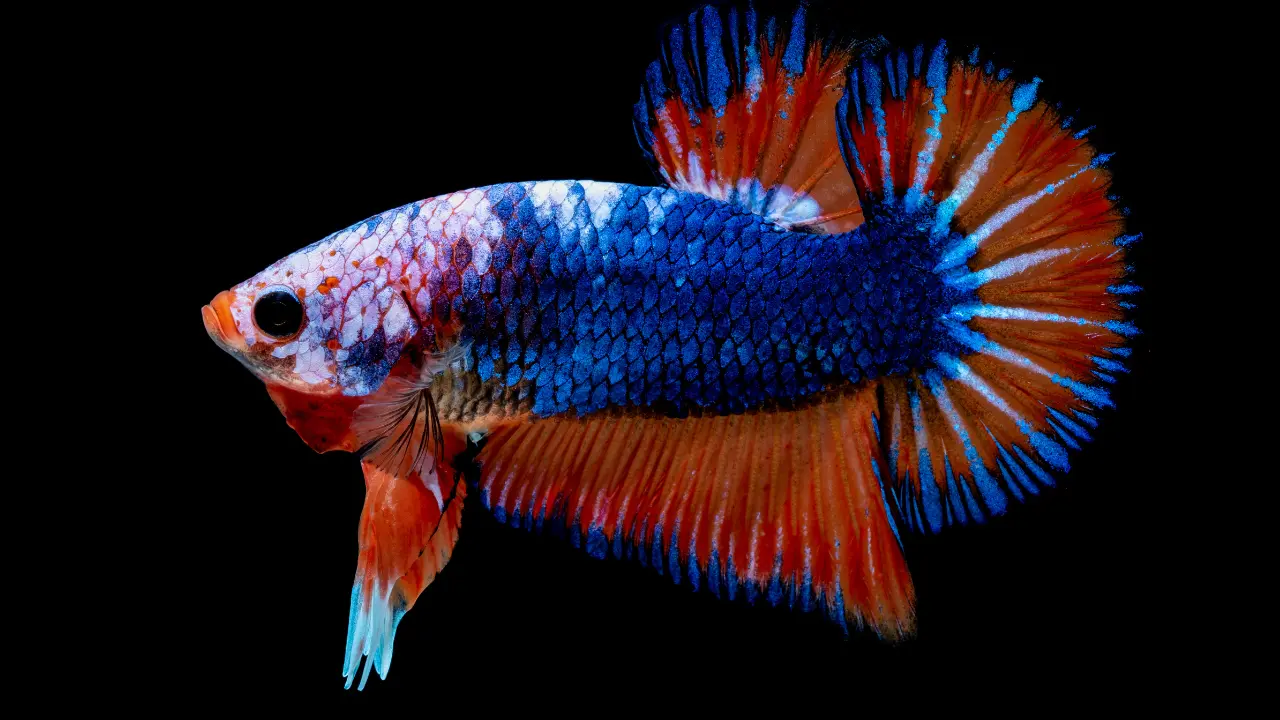
To prevent aggression, is best to have a big tank with plenty of space for all tankmates. Also, keep in mind, that this fish requires plenty of hiding spaces as shelter helps in reducing stress. All that being said, the Koi Betta is a peaceful fish and prefers a solitary life, so it’s best to keep it in a separate tank.
Summing it up, Koi Betta is a peaceful fish, but it may show territorial behavior. This aggression is usually for self-defense from potential threats. Especially while breeding, the Betta is on high alert.
Koi Betta Tank Mates
Most of the time, Koi Betta fish are calm, but males of this type are known to be very protective and mean to other fish. When they sense a threat, even if it’s one of their tank mates, they flare their fins and act aggressively. This behavior gets worse when they are mating.

Betta fish like to be alone, so we don’t recommend putting them in a tank with other fish. If you do decide to add some, make sure they swim at a different level than the rest of the fish. In this way, there is almost no chance of a fight. Because the Koi Betta’s body is so delicate, it should not be kept with fish that like to nibble on other fish’s fins.
Here is a list of the best Koi Betta tank mates
- Neon Tetras
- Harlequin Rasboras
- Corydoras Catfish
- Mystery Snails
- Ghost Shrimp
- Otocinclus Catfish
- Guppies
- Platies
- Zebra Danios
- African Dwarf Frogs
Koi Betta Tank Size
Choosing the right-sized tank for your Koi Betta is essential for its survival. You should have a spacious tank with enough space for the fish to explore and move freely. The minimum tank size for a single Koi Betta is about 5 gallons, but it’s better to have more space.

Always make sure that the tank is well covered, as the Koi Betta tends to jump out of the tank.
If you plan to add another Koi Betta in the tank, add 5 gallons of space. However, it’s best to add more space if possible as it helps the fish determine its territory. Always prevent overcrowding the tank as it can stress out the fish and cause aggression.
Koi Betta Water Parameters
To keep the tank in the best conditions for our aquatic gem, we also need to add a filter and a heater. The tank water must be clean, well-oxygenated, and have a temperature of 75 and 80 degrees Fahrenheit.

The tank’s pH level needs to be between 6.5 to 8.0. Keep in mind that Koi Betta is very sensitive to pH levels and temperature. Parameters that aren’t right for them could cause health problems.
At least a third of the tank water should be changed at least once a week. If you don’t change the water often enough, the feces can make your pretty Koi Betta very sick. Don’t change all the water at once though, because that could shock and stress the fish out.
Tank Decoration and Substrate
To mimic the Betta’s natural environment, use rocks and plants to make a lot of hiding spots. We recommend having live plants in your tank. Moss, water weeds, and water sprites are some examples of live plants that can make it look better.

You can also use driftwood to make these hiding spots, it gives the tank a natural look. Fake plants and decorations will also work, but we recommend using soft, real ones. Sharp or hard decorations could hurt our little Koi’s tail and other sensitive parts. If you use plastic, make sure it is safe for tanks and won’t hurt the fish.
Koi Betta has a delicate body, so the substrate must be smooth and harmless. The most commonly used substrates for Koi Betta are Sand or smooth gravel. Keep in mind, that the substrate should have no sharp or hard objects as they can injure the Koi Betta.
Additionally, the substrate should be clean of any leftover food or fecal material. Regular cleaning routines must be adopted for a clean water and tank environment. We recommend frequent vacuuming of the tank substrate. This will ensure a clean and thriving aquarium.
Koi Betta Diet
Koi Bettas are primarily carnivores as they eat a lot of meat. Foods like bloodworms, prawns, and smaller fish make up most of their diet. They munch on plants as well but not as much as protein-rich meaty foods.

Ideally, the Koi betta fish should get 4 pallets of food every day, or 2 pallets twice a day. Similarly, other foods can also be provided in the same quantity. Make sure they get at least one protein-rich food, every day. Here are the best foods for Koi Betta
- Betta pellets
- Freeze-dried bloodworms
- Frozen brine shrimp
- Live or frozen daphnia
- Betta flakes
- Frozen or live mosquito larvae
- Freeze-dried tubifex worms
- Betta gel food
- Pelleted or granulated krill
- Spirulina flakes or pellets
You can buy different kinds of betta food on the market, like live, frozen, dried flakes, and pallets. We recommend that you provide a mix of more than one type or pick the one that your betta likes best. Here are some of the Top picks for your Koi Betta fish.
Interestingly, Koi Bettas are known for their survival skills. They can even manage several days without eating. Although it’s best to feed them regularly, you should feed them every day, but it’s okay if you miss one or two days.
Breeding Koi Betta
The process of breeding Koi Betta needs a lot of attention and proper care. The process is pretty rough, so you can’t tell if the fish are fighting or mating. If the fish get hurt, the water could become dirty, and the fish could get more infections and diseases. So, this isn’t a job for everyone!
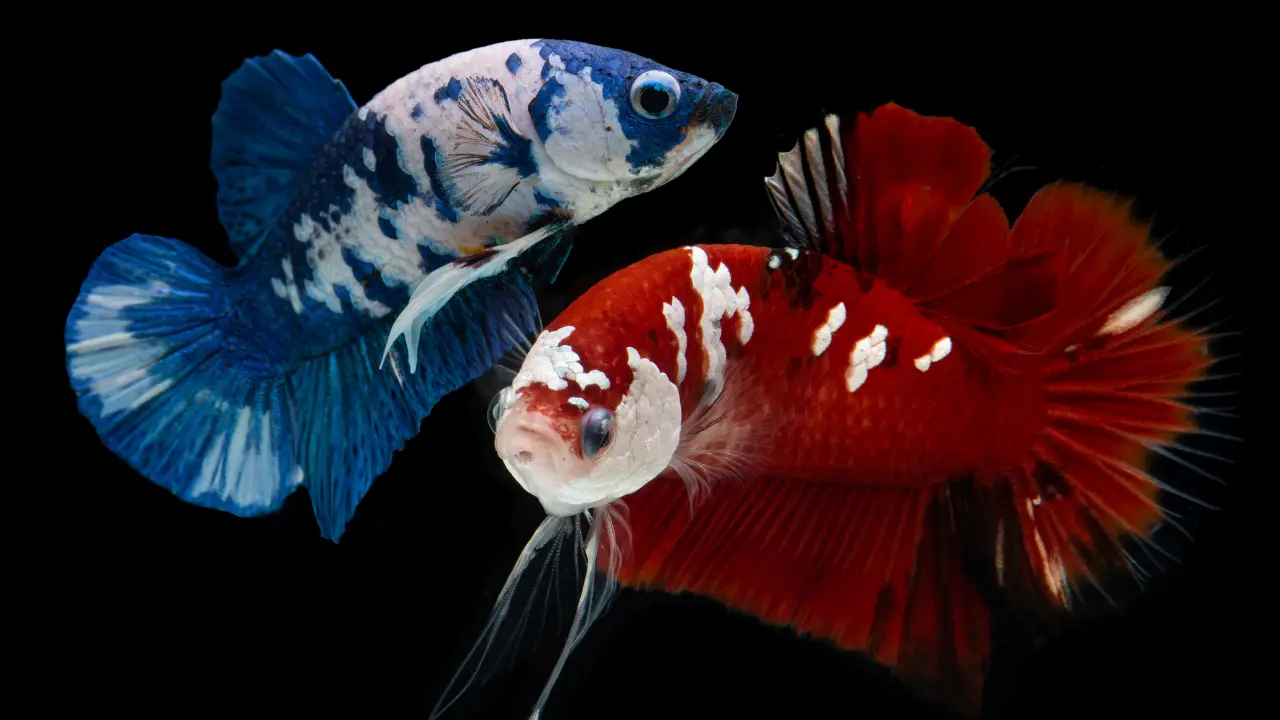
Although, it’s still worth a shot. Here are some tips to breed Koi Betta fish.
- For Breeding Koi Betta, have a separate tank with no sediment so the eggs don’t get stuck.
- Keep the water conditions ideal and avoid any fluctuations in the water parameters
- Maintain a low water flow in the tank, the environment must be calm and peaceful.
- Put a heater in the tank to keep it warm, maintaining the right temperature is vital.
- Add some grass into the tank and make places for the fish to hide and spawn.
- Put some Indian almond leaves in the nest so the male can make a bubble nest.
Wondering: How to breed the Koi Betta Fish ?
First of all, get a breeding tank and set it up according to the guide given above. Put a clear wall in the tank between the two parts. After taking the above safety measures, add the male and female Koi Betta to the tank. Make sure to put them on different sides of the divider to keep them separate. The male and female must first be able to see each other. If the male is interested, his color will glow, and if the female is interested, her color will darken.
This must be true for the pair to be a good match. If not, it’s best to get them different partners.

Moving on, if they are compatible, the male will build a bubble nest. After that, you can slowly remove the divider and let the fish swim together. They may get aggressive, play hide-and-seek, and attack each other, but this is all part of the “mating dance”
Afterwards, the female will lay eggs. The male will carry the eggs and connect them to the bubble nest after fertilizing them. He will watch over the eggs until they hatch. Once the eggs hatch, the male will keep his guard up so the fry can move easily. He may pick out the ones that are falling over and help them get back up. Remember that this is the best-case scenario. So, don’t be too hard on yourself if things don’t go as planned. Have fun and enjoy the interesting process of breeding Koi Betta fish.
Koi betta Disease
Koi Betta are delicate fish susceptible to several diseases. As a caretaker, you should know about some of the most common Koi Betta Diseases. This way you can identify any disease before it can harm your fish. After all, Prevention is better than the cure.
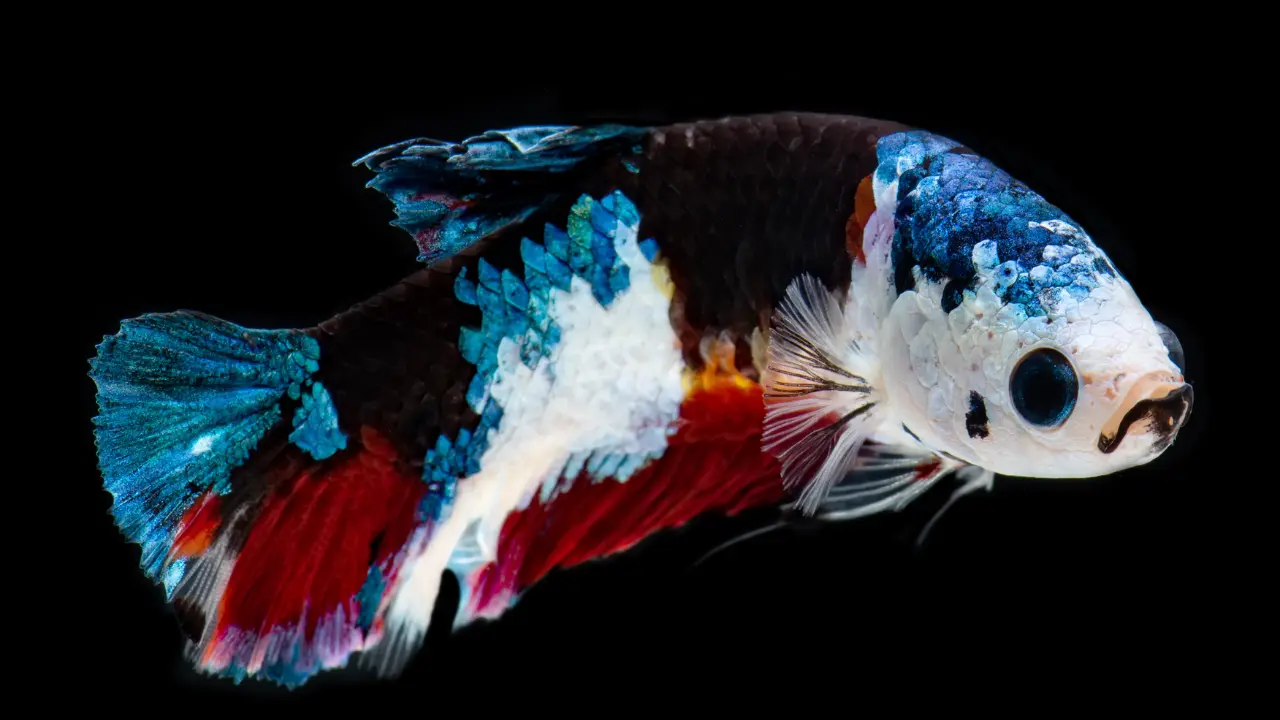
Here are 3 most common Koi Betta Diseases disease
Fin Rot
The Bettas Beautiful fins are doomed to rot in this disease. The bacterial illness tears the fins of your Koi Betta, leaving them ragged and torn. This hurts our bright little guy as the fins get shorter, lose their color, and get fraying ends. lack of clean water is the main cause of fin rot. When Koi Betta is in dirty water, its immunity weakens and makes it vulnerable to disease. Bacteria eat the beautiful fins when the defense isn’t strong enough. Fin rot can also be caused by tankmates nibbling on the fins.
Fortunately, this disease is curable. Just clean your fish tank, and maintain better water quality. We recommend a salt bath for the Koi Betta. if things still go south, use some TLCs. Monitor your tank and take care of it, and the fins will be like new in a week or two.
Ick
Koi Betta and many other fish have a terrible time with the ick. Unfortunately, it is as bad as it looks; the white spots on your fish are caused by bugs eating it. It’s important to stop this disease because it can quickly spread and cause more diseases in the fish.
But we have some good news as this disease can be cured, even though it looks bad. Just put some Ich medicine in the tank to treat the Ich, raise the temperature, and clean it up. By following these steps and giving the Koi Betta proper care, you can get rid of the Ick in a week or two. After that, your colorful friend will be healthy and happy again.
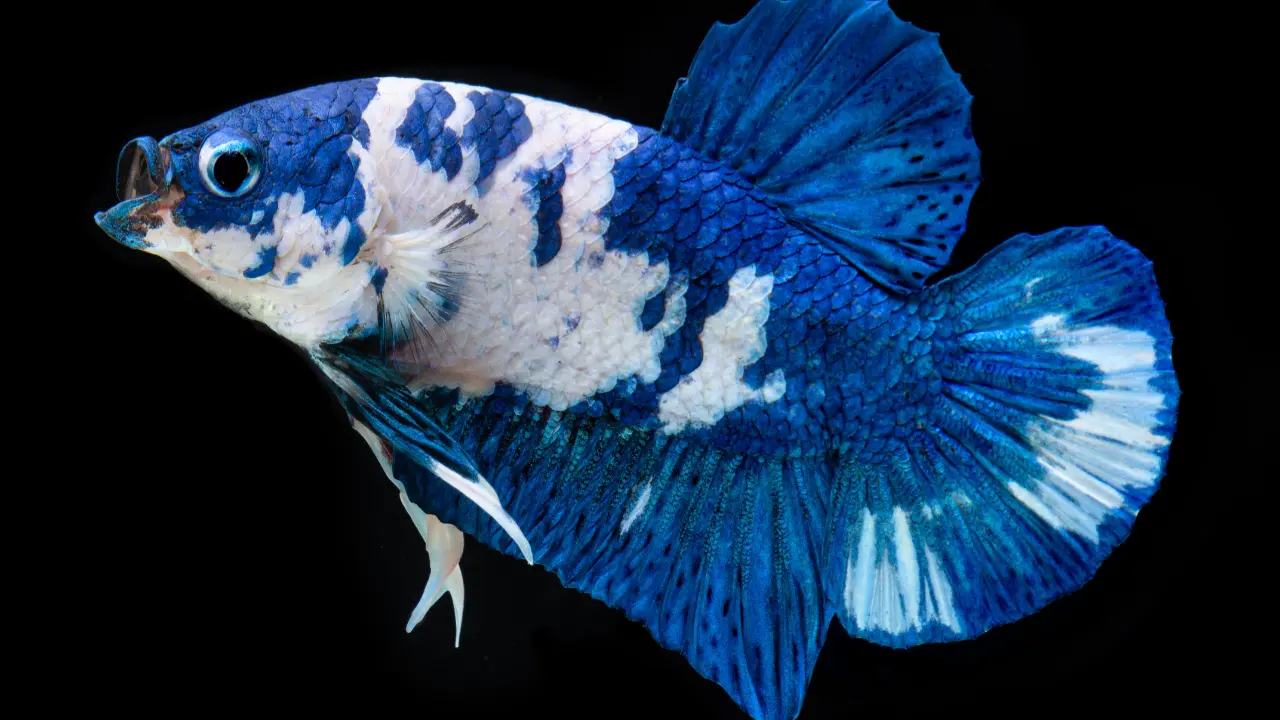
Velvet Disease
This disease is also called the gold dust disease. Velvet disease is caused by a fine yellow or gold dust-like parasite in the tank. These parasites attach to the fish and seem like a coating on its skin. The fish displays symptoms like lethargy, loss of appetite, and rubbing against objects. This is a highly contagious disease and can spread quickly.
To treat this disease, isolate the infected fish so other tank mates are safe. Slightly raise the temperature as heat makes the parasite vulnerable. Light is essential for the parasite so subdue the lighting of the tank. Additionally, keep the tank clean and regularly change the water. Give your Koi Betta salt water baths regularly to get rid of the parasite and heal quicker. Follow this routine and there’s a good chance that your fish will be happy and healthy in no time.
For more Koi Betta diseases and their treatment, check out our article on Betta swim Bladder disease.
Koi Betta Gender Identification
Figuring out the Koi Bettas gender isn’t all pink and blue! This could be quite tricky and even experts might get it wrong. Moreover, figuring out the genders of young Koi Betta can be more difficult. They require several months to develop gender-specific characters.
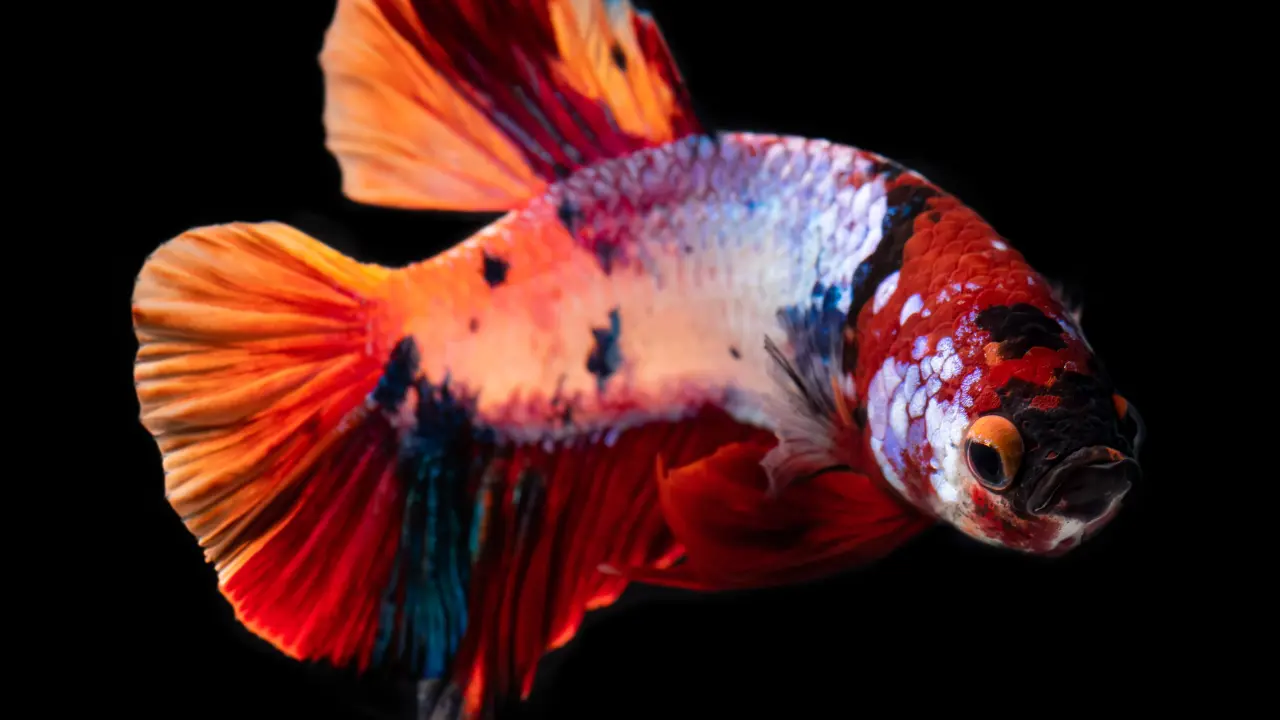
Here are some quick tips to tell the males from the females.
- Look at the body shape, the males are usually more longer than the females.
- Flip it upside down, and inspect the ventral side as females tend to store eggs in this area. In simple words, see if the belly is round and large. If it is, then you probably have a female. If it’s long and slim then it’s probably a male.
- Check the fins. Males have long and flaring fins, while the females have short and round ones. This could give you a hint about the fish’s sex but you’d have to wait for the fish to mature first.
- Observe the breeding of the fish. If the Koi Betta is making a bubble nest, it could be a male!
FAQ’s
What is the best food for Koi Betta Fish?
high-quality betta pellets or flakes, supplemented with live or frozen foods like bloodworms, brine shrimp, or daphnia are the best foods for Koi Betta fish. For more food options, take a look at the Koi Betta Diet article given above.
How long can Koi Betta live?
Koi Betta can live around 2 to 5 years in captivity. With proper care and attention, this fish can add a splash of color to your tank for a long time.
Can I keep 2 koi female betta together?
It’s generally not recommended to keep 2 bettas in one tank. However, if you plan to do so, make sure the tank is big enough.
Do koi betta fish change their color ?
Yes, the Koi Betta tends to change its color. These color changes can indicate stress and environmental changes. Sometimes the Bettas change colors because of genetics.
Are Koi Betta Suitable for Your Aquarium ?
Koi Bettas are usually kept in captivity, so it’s ideal to keep one in a tank. However, the tank must be of appropriate size, 5 gallons at least. It must maintain proper temperature and filtration. Consider the tank mate compatibility as well.
Conclusion
So, this was all about the Koi Betta care guide. In essence, the Koi Betta must have a proper diet, tank environment, and tank mates to thrive. It should have a mixed diet of high-quality betta pellets and some live foods like bloodworms. Make sure there is a lot of protein in their food, and it’s good to add a little amount of greens too.
In addition, be very careful while choosing tankmates. The Koi Betta is compatible with most fish species, although avoids aggressive tankmates. They might bully or stress out the Betta. So don’t have bigger fin-nibbling fish as tankmates for the Koi Betta.
Let me ask: Do you know how the Koi Bettas breed? Share your thoughts in the comments below! If you have any questions, take a look at the Koi Betta Breeding process given above.
Lastly, The Koi Betta needs proper care and attention like any other pet. So, it’s best to understand its needs and make sure you fulfill them. Invest some time and effort in their care and remember, the well-being of your Koi Betta is in your hands.

